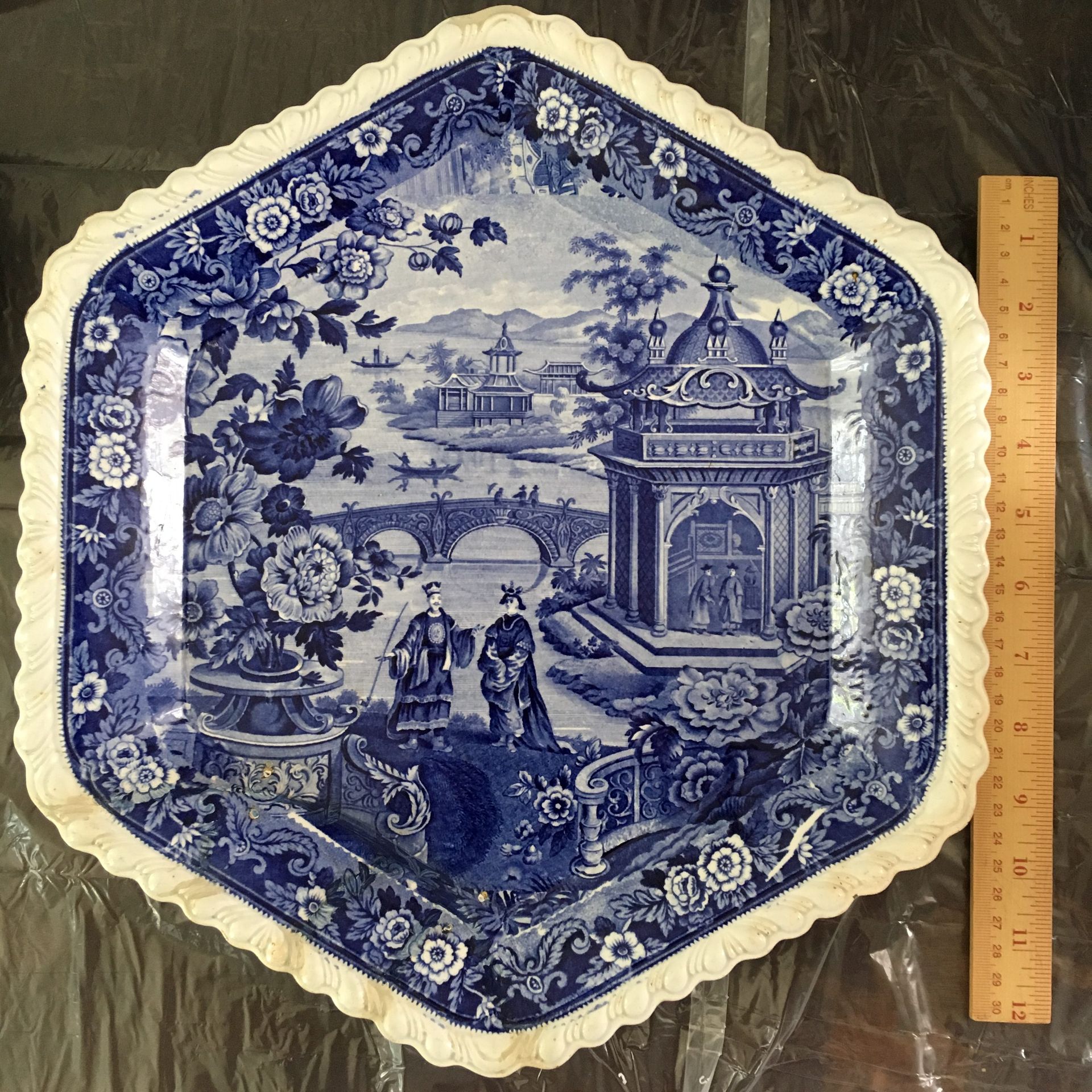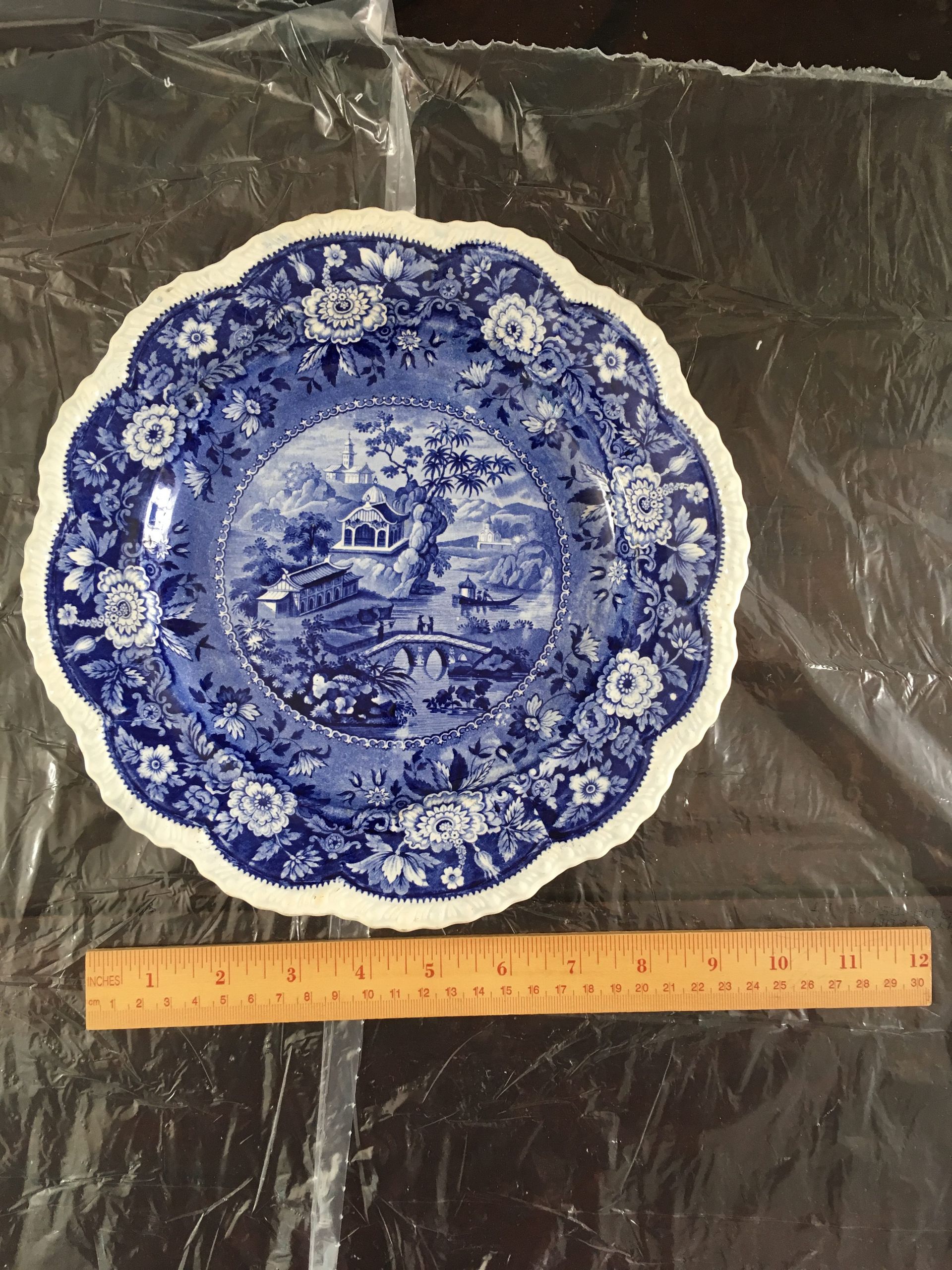What’s New in Mitchell House? Peleg Jr.’s China!
We have some new artifacts over here at the Mitchell House! We recently acquired Peleg Mitchell Junior’s (Maria Mitchell’s uncle) blue and white Ridgway china set as a generous gift from his descendants. All in all, there are thirty-seven pieces in this set and they have gone on quite the journey!
Based on their color and pattern, we believe the china dates to around the 1830s. According to the family, the china originally belonged to Mary Ann Whippey, who was Peleg Mitchell Jr’s first wife. The china stayed with the Mitchell family, even after Mary’s death in 1836. In fact, the china came to the Mitchell House in 1837 when Maria’s father sold the house to his youngest brother, Peleg Jr, so Maria’s family could move to the apartment above the Pacific Bank. Peleg Jr had recently married again to another Mary (just to keep things confusing), known by the full name of Mary Swain Russell. After Peleg Jr died, Mary Russell still spent the summers here on Nantucket, but the rest of the year she spent time in Philadelphia visiting her daughter, Lydia. At some point, the china made its way down to Philly and later to Gladwyne, PA, with Lydia’s daughter (Mary and Peleg Jr’s granddaughter). The china continued moving with the family’s descendants, some of it going to Delaware and the rest of it taking a trip to Vermont. Now, it’s all back together at its original home – the Mitchell House!
The china we have is the Asiatic Palaces pattern, which was produced by Ridgway Potteries. In the full image, you can see a scene that takes place along a river, with the focus on two people standing by an ornate gate and a large pagoda. In the background, there is a bridge, a boat, and some other pagoda-style buildings along the riverbank.
But if you look closely at our set, you might notice that the small ladle (below) and one of the plates (above) have a different blue and white pattern, as if trying to blend in with the rest. The plate still says Asiatic Palaces on the bottom, but instead of focusing on the people by the pagoda, this plate’s scene is a close-up of the bridge and the boat. The small ladle, on the other hand, has nothing to do with Asiatic Palaces and is actually a completely different pattern! Though still blue and white, this ladle has an image of a windmill. According to the family, this ladle has been used with the rest of this set for as long as they can remember!
Now, in addition to these two pieces with totally different designs, if you look reaaaally closely at the rest of the set, you might notice that the pagodas are different shapes and the people are wearing different clothing or standing in different places from piece to piece. This seems a bit unusual for transfer-ware, which is not hand-painted and is usually mass-produced.
You might also be wondering why there is a ruler in the pictures of the up-close china. That’s because these are the photos we took to put into our records as we process and accession each item. These pictures provide a great opportunity for you to catch a glimpse into what we’re working on behind-the-scenes at Mitchell House!
Stop by to check out this china set on display in the Mitchell House pantry!
Kelly Bernatzky, Mitchell House Intern 2018, Vassar College 2019
Recent Posts








